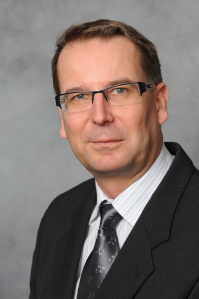By Juha Himanen
Working as a research scientist at a big cancer hospital in Manhattan is mostly a dream come true, but every so often it brings about frustration, if not pure despair. Some time ago I started printing out clever quotes I came across and pinning them on the office wall to bring some consolation for the occasional moments of desperation. When a grant application comes back, unfunded, with comments like ‘the plan doesn’t show enough preliminary results from the research group,’ I glance at a statement from the stand-up comedian and an actor, George Carlin, who once said: “I have as much authority as the Pope. I just don’t have as many people who believe it.” When I’m preparing a manuscript and keep exceeding the allotted word count, I go for Albert Einstein who stated: “It’s important to make everything as simple as possible – but not any simpler.” And when I’m trying to engage my colleagues in the holiday spirit, often in vain, I point to the classic introduction by Frank Sinatra before singing the Arlen-Mercer song ‘One for My Baby (And One More For The Road)’. This is what Frankie Boy wanted to tell us: “I feel sorry for people who don’t drink. When they wake up in the morning, that is as good as they’re going to feel all day.” And, similarly, I feel sorry for people who don’t celebrate the holiday season.
Yes, the holidays, the spirit of Christmas. Some say it’s too much hassle but I say it’s all very magical. And I’m not talking only about drinks at the office, shopping on Madison Avenue, or the Rockefeller Center Christmas tree. I’m talking about the real spirit that you can experience with a little bit of holiday sentiment in your soul. I’m of course a hopeless romantic and still feel like crying when I watch Jim Stewart’s monologue towards the end of ‘It’s a Wonderful Life’, but the story I heard last year makes me promote holiday spirit even more enthusiastically.
This is a story that happened to my son who studies at Cooper Union, on Astor Place. He was busy preparing for finals last December when he and his friends from school decided to have a quick lunch somewhere around the well-decorated streets of East Village. While walking back to the school after finishing a ‘Christmas sandwich’ at a local Deli, they were approached by a man who claimed that they had just bumped into him and that he had dropped and broken his diabetes medication. The man became aggressive and demanded money to compensate for the loss. My son and his friends were frightened and gave the man all the cash they had, about 20 dollars. When they made it back to campus, they hey felt ashamed and stupid.
The next day, again busy trying to finish a project in time, my son got a phone call from a friend who was out having lunch. He asked for advice because he had been approached by a stranger who claimed that the student was responsible for a broken medicine bottle. My son immediately asked his friend to prolong the conversation for as long as it would take him to arrive on the scene and recognize the con artist – and perhaps get some kind of restitution. Once my son approached, the con artist realized the danger and started running away. My son and his friend followed him through the Christmas trees, through the holiday decorations and gift shops, and finally caught the stranger. Indeed, he was taking advantage of young people who hadn’t yet experienced the darker side of human nature. They were confronting the man and wanted to get back those 20 dollars. But when they took a closer look at the poor man dressed in rags, with sad eyes and shaky hands, they felt so sorry for him that they suddenly changed their minds. Although their student budget was about five dollars a day, the man, living on the streets, still needed the 20 dollars much more than they did. So they let him go, wished him happy holidays, and headed back to Cooper Union.
One block before reaching the school, they suddenly saw a dark object on the hood of a luxury vehicle. They came closer and realized it was somebody’s wallet. They opened it to find a telephone number, called it, and got the owner back to his car in five minutes. As one might expect, the wallet contained the owner’s whole life: cash, credit cards, driver license, social security number, everything. The owner considered the incident the best Christmas present of his life. He offered a hefty ‘finder’s fee’ for the boys but they only asked for 20 dollars, “to conclude this Christmas story,” as they put it. After hugs and holiday wishes, everyone involved had felt a little bit of that old-fashioned Christmas magic.
And after hearing the story, so did I. Believe in magic: it’s closer than you realize!
Happy Holidays!
















